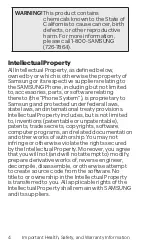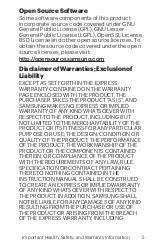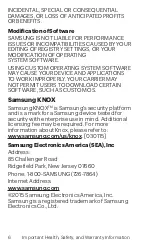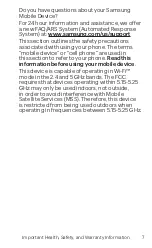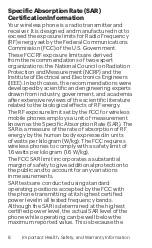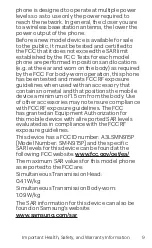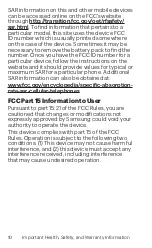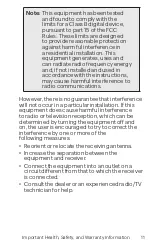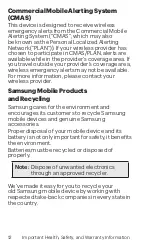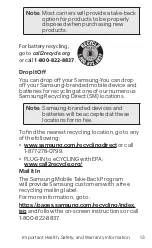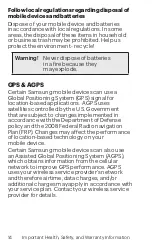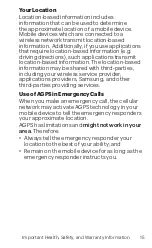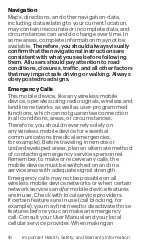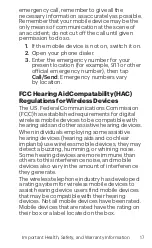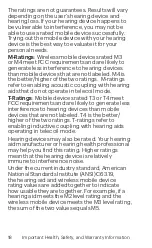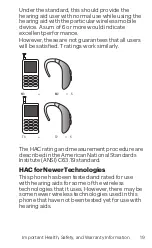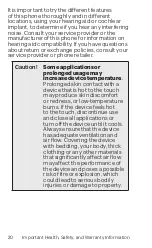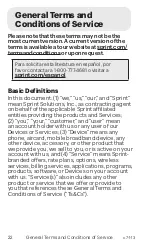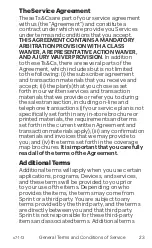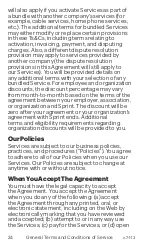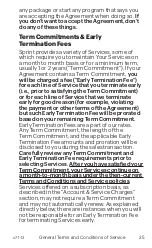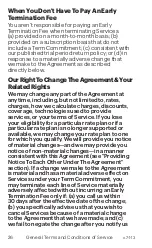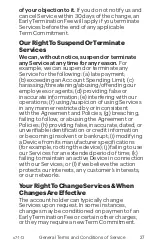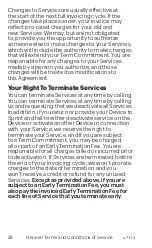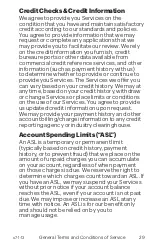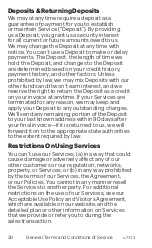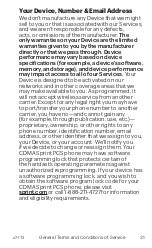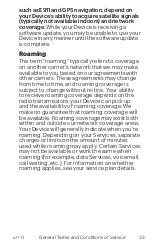
18
Important Health, Safety, and Warranty Information
The ratings are not guarantees. Results will vary
depending on the user’s hearing device and
hearing loss. If your hearing device happens to
be vulnerable to interference, you may not be
able to use a rated mobile device successfully.
Trying out the mobile device with your hearing
device is the best way to evaluate it for your
personal needs.
M-Ratings
: Wireless mobile devices rated M3
or M4 meet FCC requirements and are likely to
generate less interference to hearing devices
than mobile devices that are not labeled. M4 is
the better/higher of the two ratings. M-ratings
refer to enabling acoustic coupling with hearing
aids that do not operate in telecoil mode.
T-Ratings
: Mobile devices rated T3 or T4 meet
FCC requirements and are likely to generate less
interference to hearing devices than mobile
devices that are not labeled. T4 is the better/
higher of the two ratings. T-ratings refer to
enabling inductive coupling with hearing aids
operating in telecoil mode.
Hearing devices may also be rated. Your hearing
aid manufacturer or hearing health professional
may help you find this rating. Higher ratings
mean that the hearing device is relatively
immune to interference noise.
Under the current industry standard, American
National Standards Institute (ANSI) C63.19,
the hearing aid and wireless mobile device
rating values are added together to indicate
how usable they are together. For example, if a
hearing aid meets the M2 level rating and the
wireless mobile device meets the M3 level rating,
the sum of the two values equals M5.
Summary of Contents for Galaxy Note Edge
Page 60: ...Pageleftintentionallyblank...
Page 61: ...Pageleftintentionallyblank...

